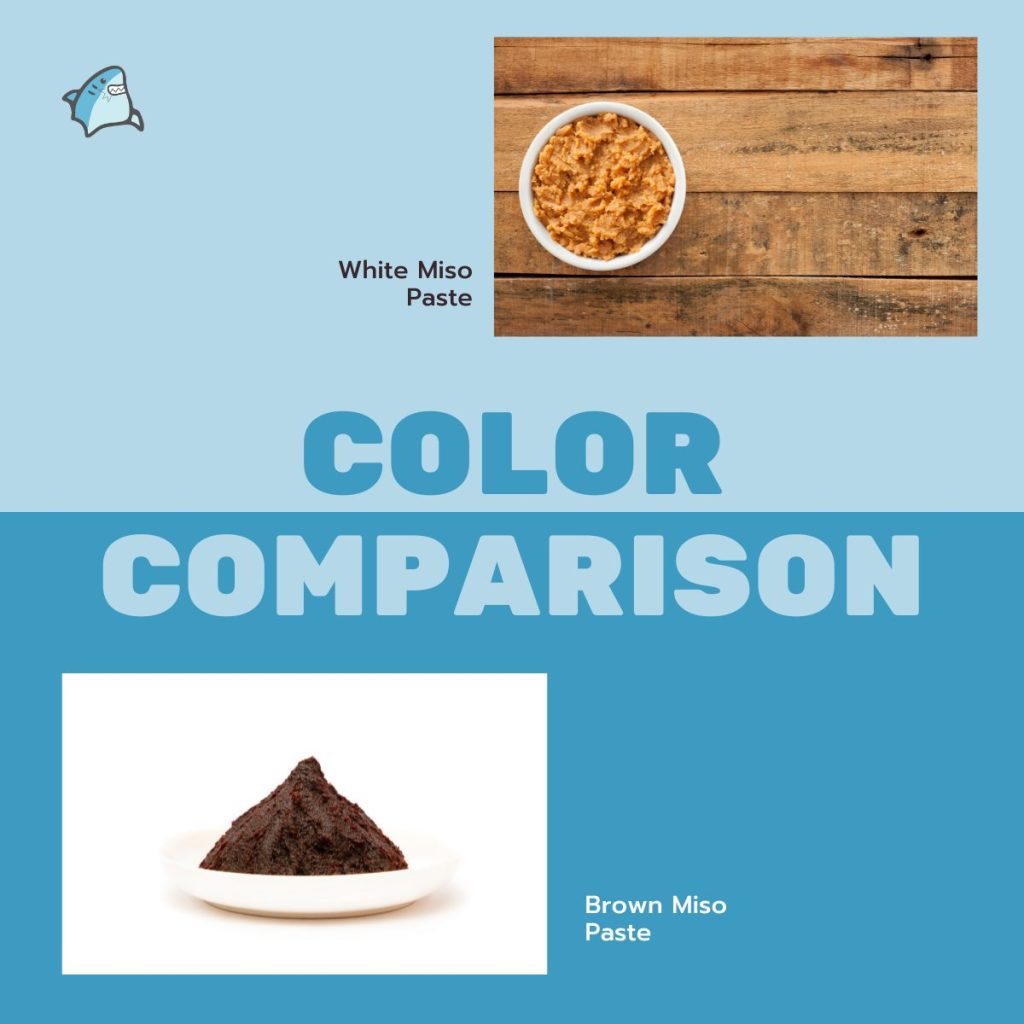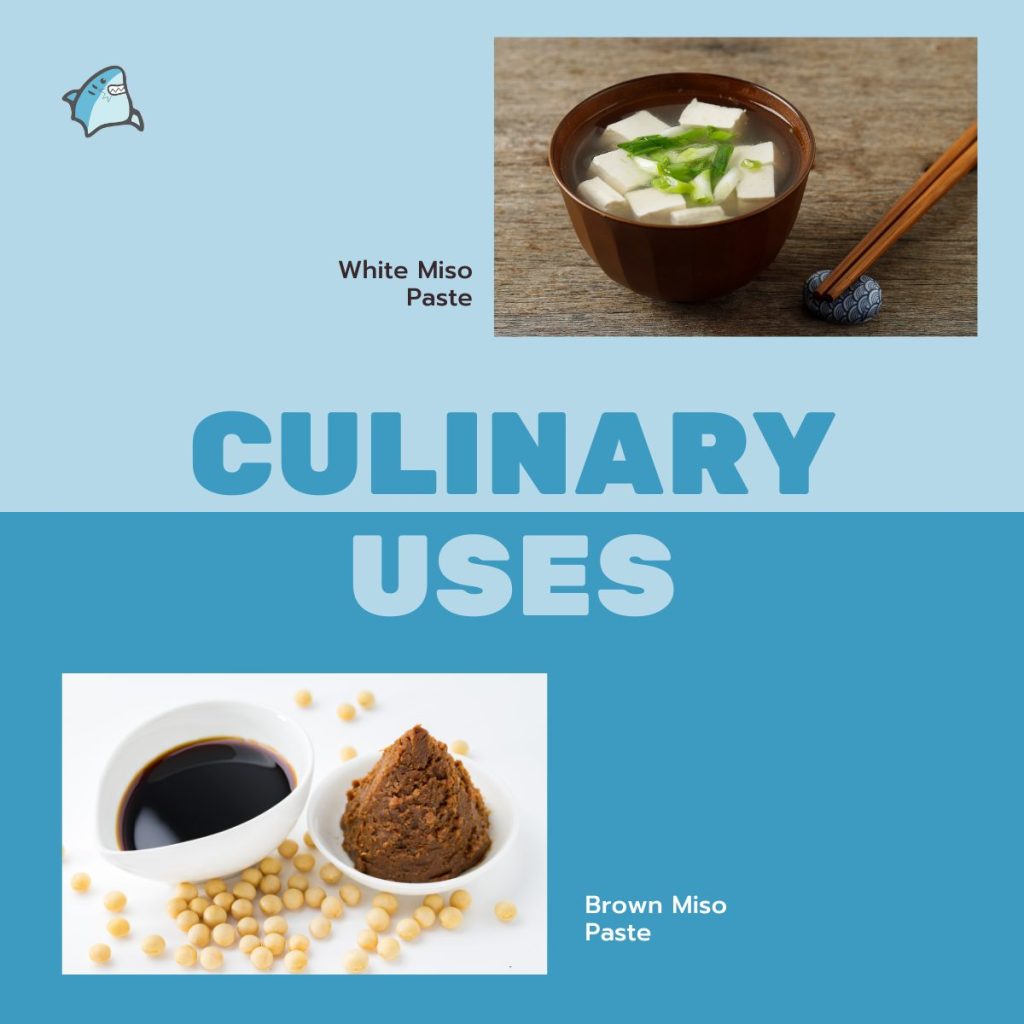Are you curious about white miso paste vs brown miso paste? Look no further! In this article, we’ll explore the distinct tastes, colors, ingredients, and culinary uses of these two popular Japanese condiments.
Additionally, we’ll delve into the health benefits they offer. Whether you’re a miso enthusiast or simply looking to expand your culinary knowledge, this informative guide will provide you with a comprehensive understanding of white miso paste vs brown miso paste.
Key Takeaways

- White miso paste has a milder and sweeter flavor, while brown miso paste has a stronger and saltier flavor.
- White miso paste has a delicate and subtle taste with a slight hint of sweetness, while brown miso paste has a deeper umami taste.
- White miso paste has a light, pale yellow color, while brown miso paste is darker and has a deep reddish-brown hue.
- White miso paste is typically made from soybeans and rice, while brown miso paste is made from soybeans and barley.
White Miso Paste vs Brown Miso Paste: Taste Differences

When comparing white miso paste vs brown miso paste, you’ll notice distinct taste differences. White miso paste has a milder and sweeter flavor compared to its brown counterpart. It has a delicate and subtle taste with a slight hint of sweetness.
On the other hand, brown miso paste has a stronger and saltier flavor. It’s more savory and has a deeper umami taste. The longer fermentation process of brown miso paste contributes to its robust and complex flavor profile.
The taste of miso paste can vary depending on the brand, region, and ingredients used, but generally, these are the key differences between white and brown miso paste. It’s important to consider these taste variations when choosing the type of miso paste to use in your recipes.
White Miso Paste vs Brown Miso Paste: Color Comparison

To compare the colors of white miso paste vs brown miso paste, you’ll notice a distinct contrast between the two options. White miso paste has a light, pale yellow color, while brown miso paste is darker and has a deep reddish-brown hue.
The color difference is primarily due to the fermentation process and the ingredients used in each type of miso paste. White miso paste is made from soybeans fermented with a higher proportion of rice, resulting in a milder flavor and a lighter color. On the other hand, brown miso paste is made from soybeans fermented with a higher proportion of barley or other grains, giving it a stronger, earthier flavor and a darker color.
The color variation between the two options can help you determine which miso paste is best suited for your recipe.
White Miso Paste vs Brown Miso Paste: Ingredient Variations

When comparing white miso paste vs brown miso paste, you’ll notice variations in the ingredients used. White miso paste is typically made from soybeans and rice, whereas brown miso paste is made from soybeans and barley. The use of different grains gives each type of miso paste its distinct flavor profile.
White miso paste tends to have a milder and sweeter taste, while brown miso paste has a stronger and more savory flavor. Additionally, the fermentation process for white miso paste is generally shorter, resulting in a lighter color and a milder flavor. On the other hand, brown miso paste is fermented for a longer period, which contributes to its darker color and more pronounced umami taste.
Understanding these ingredient variations can help you choose the right miso paste for your culinary needs.
White Miso Paste vs Brown Miso Paste: Culinary Uses

You can use both white miso paste and brown miso paste in a variety of culinary dishes.
Here are some common ways to incorporate each type into your cooking:
Soups and Broths
Both white and brown miso paste can be used to add depth and umami flavor to soups and broths. White miso paste has a milder and sweeter taste, making it a great choice for lighter soups like miso soup. Brown miso paste, on the other hand, has a stronger and saltier flavor, which works well in heartier soups and stews.
Marinades and Glazes
Both types of miso paste can be used to create tasty marinades and glazes for meat, fish, and vegetables. The sweetness of white miso paste complements seafood and delicate proteins, while the boldness of brown miso paste adds richness to heartier dishes.
Salad Dressings
White miso paste can be whisked into salad dressings to add a unique savory note. It pairs particularly well with citrus flavors and can elevate even the simplest salad.



Konnichiwa! (Hello!) I'm Pat Tokuyama, a Japanese tofu cookbook author, who travels for music, food, and adventure. If you like Japanese tea, checkout some of the newestorganic japanese tea, matcha bowls and noren and more!
** Curious about the Plant Based Japanese Cooking Club? ** Learn more here!
Sauces and Dips
Both white and brown miso paste can be used to make flavorful sauces and dips. White miso paste can be combined with ingredients like mayonnaise and soy sauce to create a creamy and tangy dip for vegetables or a zesty sauce for grilled meats. Brown miso paste, with its robust flavor, is perfect for creating savory dipping sauces for dumplings or as a glaze for roasted vegetables.
Whether you choose white miso paste or brown miso paste, both options offer a range of culinary possibilities. Experiment with different dishes and flavors to find your preferred miso paste for each recipe.
White Miso Paste vs Brown Miso Paste: Health Benefits

Continuing the exploration of white miso paste and brown miso paste, let’s delve into their health benefits.
Both white and brown miso paste offer several health benefits due to their fermented nature. They contain probiotics, which are beneficial bacteria that support a healthy gut. These probiotics can improve digestion, boost the immune system, and promote overall gut health.
Additionally, miso paste is a good source of vitamins and minerals, including vitamin K, manganese, and copper. These nutrients are essential for various bodily functions, such as blood clotting, bone health, and energy production.
Furthermore, miso paste contains antioxidants that can help reduce oxidative stress and inflammation in the body.




Konnichiwa! (Hello!) I'm Pat Tokuyama, a Japanese tofu cookbook author, who travels for music, food, and adventure. If you like Japanese tea, checkout some of the newestorganic japanese tea, matcha bowls and noren and more!
** Curious about the Plant Based Japanese Cooking Club? ** Learn more here!